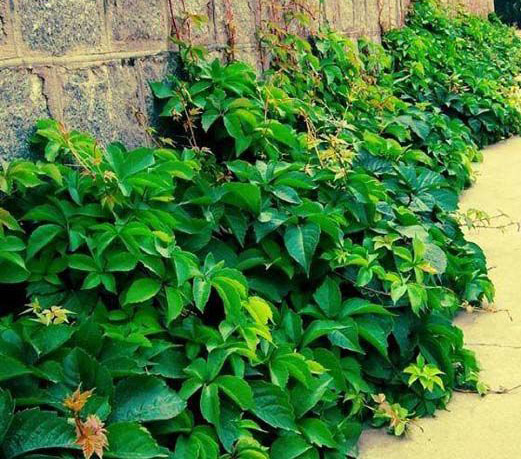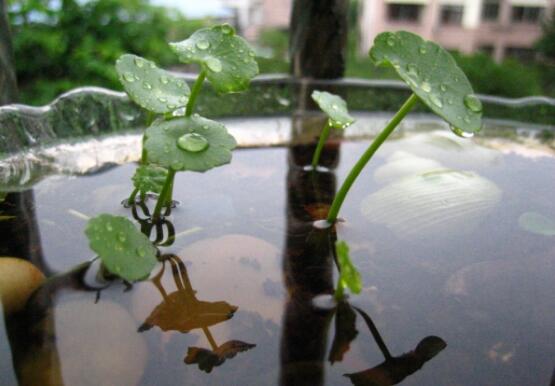Cultivation and management methods of wind and rain flowers (leek lotus, leek orchid)
Wind and rain flowers (leek lotus, leek orchid)
Scientific name: zephyranthes grandiflora
Aliases: red jade curtain, calamus lotus, leek lotus, wind and rain orchid, safflower onion orchid, red jade curtain, safflower gladiolus lotus
Family and genus: Amaryllidae
Morphological features: perennial herbs. Bulb ovoid, 2-3 cm in diam. Basal leaves often several linear in clusters. The flower is solitary at the top of the flower stem, with a bract-like involucre under it, light purplish red, 4-5 cm long and connate into a tube in the lower part. The pedicel is 2-3 cm long. The flowers are rose or pink. Seeds are black. The flowering season is spring, summer and autumn.
Ecological habits: like warm, moist, sunny, but also resistant to semi-overcast. It is suitable for sandy loam with good drainage and rich humus.
Cultivation and management: the planting depth was slightly exposed at the top of the bulb, and the bulb was divided into each time in 2 ~ 3 years. If there are too many leaves and flower stems, cut off the upper part and keep the complete bulb and 6-8 cm leaves. Potted plants should have plenty of sunshine and fat water. -after the batch flowers are faded, the water should be controlled for 50 days and 60 days, and then the normal water supply should be restored. Such alternation of dry and wet can promote multiple flowering, which can blossom 2 or 3 times a year.
Florescence: June to September.
Flower words: strong and brave to face their own setbacks and difficulties.
Garden uses: green leaves, with pink flowers, dazzling, beautiful and elegant. It is suitable for flower beds, flower borders and grass edges, and can also be potted for indoor viewing.
How to raise leek lotus? Introduction to cultivation techniques of leek lotus
Some flower friends and editors said that they saw a very beautiful flower by the side of the road but didn't know what it was called. I didn't know if I could raise it back home as a potted plant. The editor took a look at the flower and decided to share it with you.
Leek orchid is also known as leek lotus, wind and rain flowers. Flower language is a strong and brave face, annual herb, has important medicinal value, has the effect of promoting blood circulation and cooling blood, clearing heat and three poisons. Native to South America, it is now cultivated all over China. The leek orchid plant is beautiful, the flowers are fresh and elegant, the florescence is from April to September, and the fruit period is from September to October. Leek orchid is light-loving, semi-shady, drought-resistant, high-temperature resistant, cold-resistant, and grows well on loam or sandy loam with deep soil layer and good drainage. Potted plants can be placed in the courtyard to watch, can also be used as flower beds, flower paths or grass edge material, is a good flower for landscaping and beautification.
Cultivation techniques of Chinese chive orchid
The main results are as follows: (1) Seedling techniques: sowing and raising seedlings, selecting full and full seeds in time when the pericarp changes from green to black, drying and threshing, dry storage, and sowing in the following spring. When sowing, build a border or strip sowing on the loose and fertile sandy soil. After sowing, cover the soil with 1cm, spray water, and then cover with a layer of straw to moisturize and keep warm. The straw was removed when the seedling height 1cm was high, and once fertilized when the seedling height 7cm was high, the seedling height 20cm could come out of the nursery and transplant. Branch propagation, select bulbs in early spring, select robust bulbs to plant.
(2) planting techniques: select loam or sandy loam with deep soil layer and good drainage, hole distance 15cm. Use 17cm pot to plant 5-7 plants. Be careful not to hurt the bulbs when planting, and strengthen fertilizer and water management after planting. Fertilization is applied every two months during the growing period to promote bulb hypertrophy and good flowering.
Culture and cultivation techniques of leek orchid
Leek orchid, alias: leek lotus, wind and rain flower; Latin name: Zephyranthes grandiflora, is a perennial herb of the genus Allium of Lycoris family.
Bulb ovoid, 2-3 cm in diam. Basal leaves often fascicled, linear, flattened, about 15-30 cm tall, clustered. The leaves are linear, very similar to leeks. The flower stem is drawn from the foliage, and most of the petals are 6, sometimes 8. Leek orchid is large in shape, pink, petals slightly curved; small leek orchid is thick peach red, adult each bulb can blossom, clump of flowers, brilliant in the sun, charming, loved by everyone. The flowering period of leek orchid is from April to September, and the florescence of leek orchid is about May to August in summer. Suitable for garden flower bed edge planting or pot planting.
First, culture can be planted by separate plants or bulbs, which can be carried out all the year round, but it is the best in spring. As long as the root of the ball is dug up, 5 balls are planted in each place and watered to maintain proper humidity, it is very easy to survive. When digging up the bulbs, be careful not to hurt them. If there are too many leaves and flower stems, cut off the upper part and leave the complete bulb and 6Mel 8cm leaves for planting. If the bulb has germinated buds and fully watered after branching, it can still blossom. Second, the quality of cultivated soil is better than fertile sandy loam. Plant 5 balls per hole at the edge of the flower bed, about 15 cm apart, and 7 balls per 17 cm pot. Pay attention to irrigation to maintain humidity after planting. The cultivation site should have enough sunshine, it is not easy to divide the bulbs in the shade, and it is not easy to bloom. Fertilizer can be used organic fertilizer such as oil meal, compost or nitrogen, phosphorus, potassium fertilizer, once every 3 months, according to the proportion of phosphorus and potassium fertilizer, can promote bulb hypertrophy, good flowering. When the plants are clustered and crowded, the ramets must be forced. Strong in nature, drought-resistant and high-temperature resistant, easy to cultivate, and the suitable temperature for growth is 22 ~ 30 degrees.
- Prev

Illustration of the methods and techniques of planting Parthenocissus officinalis
Parthenocissus is a climbing plant of the grape family. If you do not give it something to climb when it grows, its stems and leaves can only cover the ground, just like putting a layer of quilt on the earth, so Parthenocissus is also called brocade. It can be firmly attached to the surface of walls, rocks, etc., with a sucker on a branch.
- Next

How do you grow seeds? 2 ways to grow seeds.
In how to raise Lysimachia christinae, we introduce potted Lysimachia christinae, but people who love flowers should know that raising Lysimachia christinae can be done without soil, that is to say, it can be hydroponic, then how to cultivate Lysimachia christinae seeds? In fact, among many plants, Lysimachia christinae is the easiest to cultivate, so we don't have to worry about whether we can successfully cultivate.
Related
- Fuxing push coffee new agricultural production and marketing class: lack of small-scale processing plants
- Jujube rice field leisure farm deep ploughing Yilan for five years to create a space for organic food and play
- Nongyu Farm-A trial of organic papaya for brave women with advanced technology
- Four points for attention in the prevention and control of diseases and insect pests of edible fungi
- How to add nutrient solution to Edible Fungi
- Is there any good way to control edible fungus mites?
- Open Inoculation Technology of Edible Fungi
- Is there any clever way to use fertilizer for edible fungus in winter?
- What agents are used to kill the pathogens of edible fungi in the mushroom shed?
- Rapid drying of Edible Fungi

